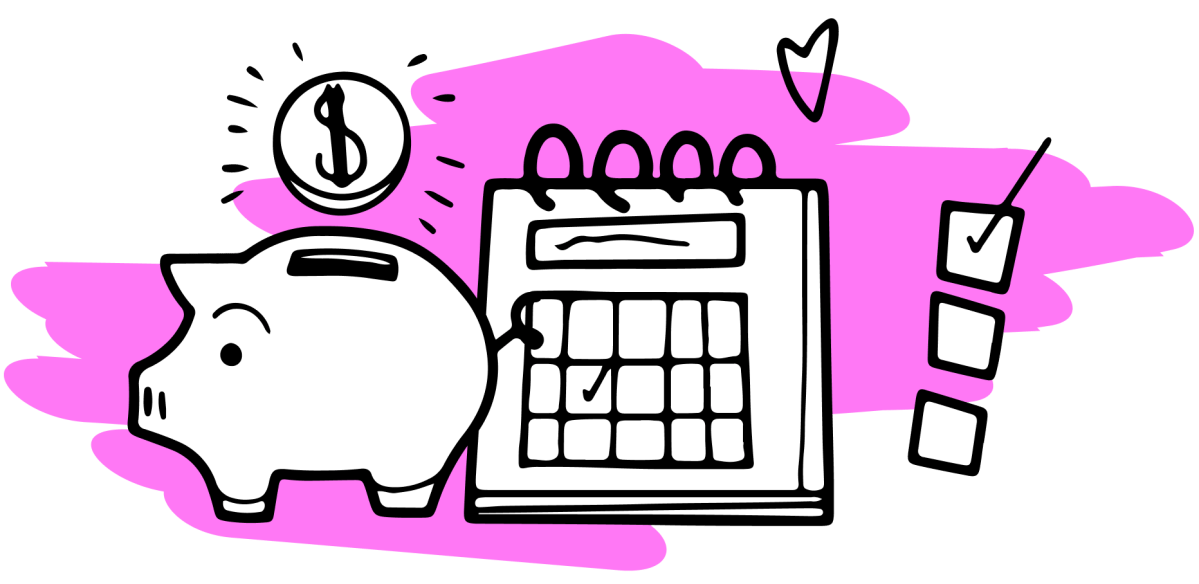Graduating from high school is an exciting time in a teen’s life—they’re getting ready for prom, getting their first car, and preparing to make some pretty big life decisions. And while your teen may be ready for the next step, their savings may not.
Whether your kid dreams of going to college, university, or a trade school, post-secondary education is an invaluable learning experience. Getting the schooling they need to take on their future career requires some preparation—both mentally and financially.
Luckily, there are a number of options available to both you and your teen that can help them pursue the school of their choice. We share some of the ways to pay for post-secondary education, such as using their RESP; applying for scholarships, government grants, and loans; and ways your kids can earn extra money while studying.
Key takeaways
- Starting a Registered Education Savings Plan (RESP) early can help you save for your child’s post-secondary education, and you can apply for government top-ups to your child’s fund.
- Your teen may be eligible for entrance scholarships when they apply to certain programs, or they can apply for grants, most of which don’t need to be repaid.
- The government has a variety of provincial and territorial loans and grants available to students based on financial need.
- A student line of credit is an option to access money quickly, and your teen can defer big payments until they graduate.
- Internships, co-op placements, and apprenticeships are great ways for teens to gain valuable experience in their field, while being paid.

How much will post-secondary studies cost?
The average price of tuition for the 2022–23 school year in Canada is between $3,852 to $7,437, depending on the program and school. For an undergraduate degree at a Canadian university or a college, the price tag rings in at around $6,800 per year. But there’s more than just tuition to cover when it comes to going to school. There’s also the cost of living in a student residence or off-campus housing, a meal plan or buying groceries, transportation, textbooks, plus the fun stuff, like socializing with new friends. If you’re not sure how it will all add up, a budget calculator can help you and your teen see big-picture costs.
How to pay for post-secondary education in Canada
Here are three ways families can help fund post-secondary education in Canada:
Use savings
Maybe your teen has been working part-time or has had summer jobs and now has a decent nest egg in their student bank account. Or maybe you’ve been stashing away their birthday money in a kid’s savings account since they were little. Either way, it’s important to remind your teen that putting aside a little bit every month or year can make a big difference when they have big education goals in mind. Evaluate how much you’ve both put aside to see how much more you need to make your budget work.

RESPs
One way to give your child a head start is to save for their schooling through an RESP, which allows you to earn interest tax-free on up to $50,000 per beneficiary. (You can also apply for top-ups to your yearly contributions from the Canadian Education Savings Grant [CESG] up to a lifetime max of $7,200.) When your child enrolls part-time or full-time in an eligible post-secondary education program, you can start withdrawing money for expenses related to their education, for things such as tuition, transportation, and books, as determined by your RESP provider.
Scholarships, grants, and bursaries
If you and your teen haven’t saved as much as you’d both hoped, there are scholarships, grants, and bursaries that students can apply for to help cover the difference. The best part about these is that your teen won’t have to pay back the money. Here are a few options:
University and college scholarships
Your teen may be eligible for entrance scholarships based on merit simply by applying to the university or college of their choice. Even if they’re not eligible, there are many different types of school scholarships available to students Canada-wide, focused on things such as athletic ability, community leadership, or for Indigenous youth. There are many places to search for the best fit for your teen, such as Scholarships Canada.
Private grants
Some non-profits and businesses offer private grants to students. Some are based on academic interests, financial need, or grades, while others support communities such as Black or Indigenous youth. Some of these may require an essay or proof of community service, but it’s worth the effort—private grants can offer them access to the program they want, and the money won’t need to be paid back.
How the government helps students pay for post-secondary education
The government has a program to help students pay for school: the Canada Student Financial Assistance Program (CSFA Program), which works with the provinces and territories to provide grants and loans. Eligibility varies, but money is available to full- and part-time students, from low- and middle-income families who may have dependents, or who may have permanent disabilities.
Provincial grants and loans
The CSFA helps eligible students connect with financial options, such as grants and loans for full-time and part-time students. Each province and territory has its own government loan program. For example, the Ontario Student Assistance Program (OSAP) and British Columbia’s StudentAid BC have grants (which don’t need to be repaid) and student loans (which need to be paid back—with interest—once your kid is done school). You can also use the government’s Student Aid Estimator to figure out how much you could receive.
Canada Student Grant
The Canada Student Grant is an option for full- or part-time students in financial need who are attending a qualifying program, and who have a family income that is below a certain threshold. Full-time students could receive up to $4,200 per year, depending on their financial need.

Canada Apprentice Loan
If your kid dreams of becoming an industrial electrician or a carpenter, there are lots of avenues to get financial assistance while they learn the tricks of the trade. The Canada Apprentice Loan is available to cover the cost of technical training for $4,000 per training period, for up to five periods. There are caveats, though: their apprenticeship needs to be with a Red Seal Program. If a student meets all the qualifications and is accepted, the loan could also remain interest-free for up to six years.
How financial institutions can help pay for post-secondary education
If you’re considering borrowing to cover the costs of your teen’s schooling, talk to your bank or financial institution about the available options for both you and your teen.
Student line of credit
A line of credit for students is one way that your teen can borrow the money they need, when they need it, and pay it back when they are done post-secondary school. (Most financial institutions require students to start paying back the principal two years after graduation.) It also allows them the flexibility to use it on the things they need right away—like a new laptop or even a study trip abroad. Just make sure to remind your teen that unlike a student loan from the government that doesn’t accrue interest until they graduate, a student line of credit will have monthly interest payments to keep up with, and the interest rates can change. Plus, they’ll need someone (usually a parent or guardian) to co-sign the loan to guarantee that someone will make the payments if for some reason your teen can’t.
Bank loan
Taking out a personal line of credit or bank loan is one way for parents to help pay for their child’s education without affecting their teen’s future financial situation. Plus, it should allow you to access more cash for big tuition payments, quickly. Depending on whether your loan is secured or unsecured, interest rates may vary. There can be additional fees and credit score repercussions, so before you borrow, ensure you can pay it back on the agreed-upon schedule. And don’t let your kids completely off the hook. If you’re taking on a loan for their financial future, they can chip in when they can through part-time work or a summer job.
Home Equity Line of Credit (HELOC)
A Home Equity Line of Credit (HELOC) is another option for parents who want to cover their kid’s education costs. A HELOC is based on the current value of your home minus your outstanding mortgage balance, so it could be a way to borrow at a lower interest rate. Also, more credit should become available to you again as soon as you pay it off. When borrowing against your home, though, you’ll want to take a good look at your financial situation to make sure it’s the right move, that you’ll be able to pay off the minimum, and how you’ll manage the accumulated debt.
How students can pay for post-secondary education while attending school
There are other ways for young adults to pay for school and related costs if they need additional cash flow.

Part-time job
A part-time job can top up your teen’s bank account, provide flexibility around their class schedules, and be a source of valuable work experience. Some schools have opportunities for on-campus employment—just make sure your future student applies far in advance (when they accept a placement is a good time to look), as sometimes the jobs for the coming year open early (and fill up fast). A side hustle is another way to make money. From selling artwork on social media to tutoring in the evenings and/or on weekends, finding a gig that your teen enjoys (and can get paid for) is a great way to pad their bank account.
Co-op work terms or internships
Consider a co-op program, where students have a paid work term in an industry in their field. They get hands-on experience alongside an opportunity to network. Internships are another great option. These can take place in summers or during the academic year and may even lead to a future full-time gig. Internships used to have a bad rap for being unpaid (Remember?), but they’re now covered under the Canada Labour Code, so interns will at least be paid minimum wage.
Read more: What teens need to know about getting an internship.
Apprenticeships
Becoming an apprentice, where your young adult can learn a trade, art, or job under the formal supervision of an experienced professional, is another way to get some paid experience and gain valuable networking contacts. Your provincial or territorial employment office will often have resources for applying for apprenticeship roles.
Signing up for Mydoh is an easy way to help kids and teens learn how to save for school, or manage their money while they’re away from home learning. It’s a great resource for important skills that will help them excel in the real world.
Download Mydoh and help build the foundation of financial literacy for your kids and teenagers.
This article offers general information only and is not intended as legal, financial or other professional advice. A professional advisor should be consulted regarding your specific situation. While the information presented is believed to be factual and current, its accuracy is not guaranteed and it should not be regarded as a complete analysis of the subjects discussed. All expressions of opinion reflect the judgment of the author(s) as of the date of publication and are subject to change. No endorsement of any third parties or their advice, opinions, information, products or services is expressly given or implied by Royal Bank of Canada or its affiliates.

Teach Your Kids How To Earn, Spend & Save Money
with the Mydoh App &
Add up to five kids and two parents on one account.












